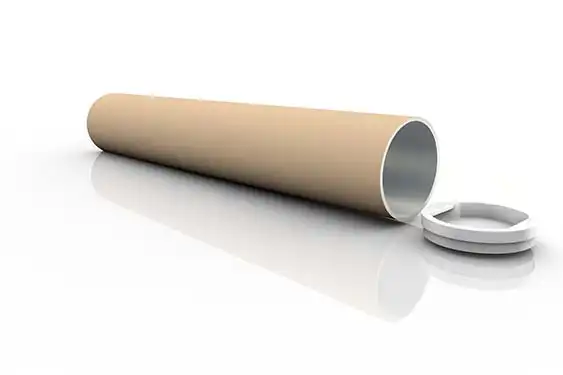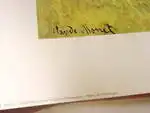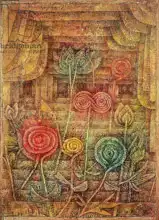About this finishing
Print. The image is printed on the top quality 10-ink HP Z9PS printer on HP matte 270 g / m2 paper. You can choose any size to an accuracy of 1 cm. A margin of 5 cm around the image is added to the size of the motif.


You can find a detailed description about our finishings
here.
Spiral Flowers
Date:
1926Medium:
watercolours, woodLocation:
private collectionDimensions:
39.1 x 28.3"Spiral Flowers" is a painting by the Swiss artist
Paul Klee . Paul Klee was known for his unique style that combined elements of
abstraction ,
symbolism and
cubism . "Spiral Flowers" was created in 1922 and is a striking example of Klee's artistic expression. The main element of the image are spirals, which form the basic motif of
flowers . These spirals are composed of circles and curves that intertwine and create the impression of movement and dynamism. The painting "Spiral Flowers" is abstract and does not depict specific flowers, but rather evokes their shape and movement. The abstract approach allows the viewer to see and perceive the flowers in different ways.
Klee used different textures and lines in his painting that give the impression of different materials and surfaces. This adds a sense of tangibility and physicality to the image. Although the painting is abstract, the influence of Cubism can be seen in it, especially in the way the flowers are deconstructed into geometric shapes and intricate patterns. Klee's work often contained symbolic elements, although the specific meaning may be open to different interpretations. Spirals themselves can evoke movement, energy and cyclicality.
Klee painted picture Spiral Flowers in 1926. Prevailing color of this fine art print is orange and its shape is portrait. Original size is 39.1 x 28.3. This art piece is located in a private collection This image is printed on demand - you can choose material, size and finishing.
Paul Klee (1879-1940). From childhood, he was interested in both music and painting, but as is evident, finally decided on painting - his paintings are among prized artworks. In Munich, he met
Kandinsky, Franz Marc, and other artists of the then avant-garde. He met also his future wife, pianist Lily Stumpf. His work is associated with a
expressionism, cubism, and
surrealism. He was one of the four Die Blaue Vier (with Kandinsky, Feininger and Jawlensky). He taught at Bauhaus and the Düsseldorf Academy until 1933, when the Nazis declared his paintings a figment of a sick soul and with labelled his whole creation as degenerate art. Klee was extremely hardworking and after his death, he left behind 8926 works in Switzerland. Klee’s paintings are fragile, with a sensitive use of color (his colour mixing ranks among the world’s best) and frequent references to poetry, music and dreams.

